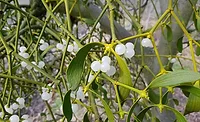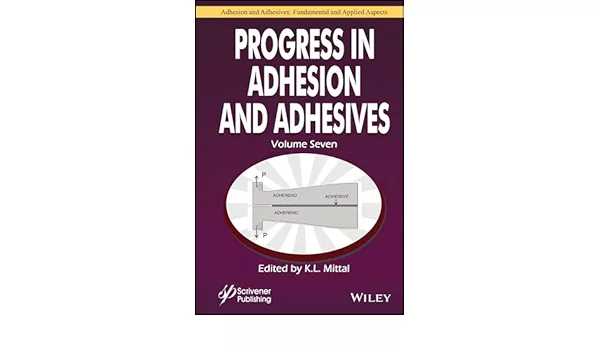Super Sticky Barnacle Glue Cures Like Blood Clots
Research suggests barnacle glue polymerization is a
specialized form of wound healing.

 Barnacles are a big problem for boats. Adhering to the
undersides of vessels, carpets of the crustaceans can increase fuel consumption
by as much as 25%. Ship owners would love to know how to stop these hitchhikers
gluing on, but before you can learn how to disrupt an adhesive, you have to
understand the curing process. Curious about many aspects of the crustacean’s
lifestyle, Dan Rittschof from Duke
University decided to
find out how barnacle adhesive polymerizes. ‘The process must be related to
something because glue isn’t de novo,’ says Rittschof, so he wondered what else
coagulates under water and came up with two answers: blood and semen. With a
colossal body of blood clotting literature to draw on, Rittschof decided to
follow his evolutionarily inspired theory to see whether barnacle glue
polymerization is really an extreme example of scab formation and publishes his
results on 16 October 2009 in the Journal of Experimental Biology at jeb.biologists.org.
Barnacles are a big problem for boats. Adhering to the
undersides of vessels, carpets of the crustaceans can increase fuel consumption
by as much as 25%. Ship owners would love to know how to stop these hitchhikers
gluing on, but before you can learn how to disrupt an adhesive, you have to
understand the curing process. Curious about many aspects of the crustacean’s
lifestyle, Dan Rittschof from Duke
University decided to
find out how barnacle adhesive polymerizes. ‘The process must be related to
something because glue isn’t de novo,’ says Rittschof, so he wondered what else
coagulates under water and came up with two answers: blood and semen. With a
colossal body of blood clotting literature to draw on, Rittschof decided to
follow his evolutionarily inspired theory to see whether barnacle glue
polymerization is really an extreme example of scab formation and publishes his
results on 16 October 2009 in the Journal of Experimental Biology at jeb.biologists.org.
Rittschof teamed up with Gary Dickinson and the first thing that Dickinson had to do was work out how to collect the unpolymerised glue and keep it fluid. Building on 30 years of Rittschof’s experience and Beatriz Orihuela’s expertise at growing and reattaching barnacles, Dickinson learned to gently lift polymerised glue away from the pores that secrete the adhesive and quickly collect the minute drops as they oozed from the shell. Working in the cold room to slow the polymerization process, Dickinson had only 5 minutes before each sample polymerized and the glue set solid.
Next the team had to convince themselves that the viscous secretion was glue and not some other body fluid. Dickinson found that the fluid polymerised rapidly and was packed full of protein, just like barnacle glue. Next Dickinson teamed up with Kathy Wahl to use atomic force microscopy to compare the molecular structures of naturally cured glue (from stuck-down barnacles) and his polymerized samples. The two samples were virtually indistinguishable and Dickinson could clearly see tangled webs of fibres in his glue drops, similar to the tangled fibres in blood clots.
But this evidence was still far from proving that barnacle glue cures by the same process as blood clots. Dickinson and Rittschof needed to identify the key proteins that polymerize the cement. Knowing that blood clots are formed when enzymes, known as trypsin-like serine proteases, trigger a cascade of events that culminates in the formation of the long fibres found in blood clots, Dickinson and Rittschoff began searching for the protease in the unpolymerised glue. Separating the glue’s components on a gel, Dickinson could see the tell-tale pattern of bands that suggested that a trypsin-like serine protease was present. And when Dickinson added an inhibitor, to inactivate the protease, to a fresh sample of glue, the sample didn’t set.
Having convinced themselves that the glue contained a trypsin-like serine protease, the team began to search for other blood-clot-like proteins in the barnacle’s secretions. Teaming up with Joseph Bonaventura and Irving Vega, Dickinson chopped each glue component into minute fragments, measured their sizes with mass spectrometry and matched the fragment pattern to known protein sequences. Amazingly, one of the glue proteins was remarkably similar to human factor XIII: a human blood clotting factor that cross-links clot fibres to form a scab. In fact, some regions of the human and barnacle proteins were completely identical. Dickinson and Rittschof had stumbled across the crucial protein that cross-links the glue fibres to cure barnacle cement and it was very similar to factor XIII, an essential human blood-clotting factor.
Rittschof admits that he is shocked that his hypothesis stands up to the tests. ‘It seems likely that barnacle glue polymerization is a specialized form of wound healing,’ he says and suspects that many other marine animals that rely on glue to get a grip may use the same polymerization mechanism.
Source: Knight, Kathryn. "Barnacle Glue Cures Like Blood Clots." J. Exp. Biol. 2009 212: i. http://jeb.biologists.org. Reproduced with permission.

Photo: Gary Dickinson

Rittschof teamed up with Gary Dickinson and the first thing that Dickinson had to do was work out how to collect the unpolymerised glue and keep it fluid. Building on 30 years of Rittschof’s experience and Beatriz Orihuela’s expertise at growing and reattaching barnacles, Dickinson learned to gently lift polymerised glue away from the pores that secrete the adhesive and quickly collect the minute drops as they oozed from the shell. Working in the cold room to slow the polymerization process, Dickinson had only 5 minutes before each sample polymerized and the glue set solid.
Next the team had to convince themselves that the viscous secretion was glue and not some other body fluid. Dickinson found that the fluid polymerised rapidly and was packed full of protein, just like barnacle glue. Next Dickinson teamed up with Kathy Wahl to use atomic force microscopy to compare the molecular structures of naturally cured glue (from stuck-down barnacles) and his polymerized samples. The two samples were virtually indistinguishable and Dickinson could clearly see tangled webs of fibres in his glue drops, similar to the tangled fibres in blood clots.
But this evidence was still far from proving that barnacle glue cures by the same process as blood clots. Dickinson and Rittschof needed to identify the key proteins that polymerize the cement. Knowing that blood clots are formed when enzymes, known as trypsin-like serine proteases, trigger a cascade of events that culminates in the formation of the long fibres found in blood clots, Dickinson and Rittschoff began searching for the protease in the unpolymerised glue. Separating the glue’s components on a gel, Dickinson could see the tell-tale pattern of bands that suggested that a trypsin-like serine protease was present. And when Dickinson added an inhibitor, to inactivate the protease, to a fresh sample of glue, the sample didn’t set.
Having convinced themselves that the glue contained a trypsin-like serine protease, the team began to search for other blood-clot-like proteins in the barnacle’s secretions. Teaming up with Joseph Bonaventura and Irving Vega, Dickinson chopped each glue component into minute fragments, measured their sizes with mass spectrometry and matched the fragment pattern to known protein sequences. Amazingly, one of the glue proteins was remarkably similar to human factor XIII: a human blood clotting factor that cross-links clot fibres to form a scab. In fact, some regions of the human and barnacle proteins were completely identical. Dickinson and Rittschof had stumbled across the crucial protein that cross-links the glue fibres to cure barnacle cement and it was very similar to factor XIII, an essential human blood-clotting factor.
Rittschof admits that he is shocked that his hypothesis stands up to the tests. ‘It seems likely that barnacle glue polymerization is a specialized form of wound healing,’ he says and suspects that many other marine animals that rely on glue to get a grip may use the same polymerization mechanism.
Source: Knight, Kathryn. "Barnacle Glue Cures Like Blood Clots." J. Exp. Biol. 2009 212: i. http://jeb.biologists.org. Reproduced with permission.
REFERENCE
Dickinson, G. H., Vega, I. E., Wahl, K. J., Orihuela, B., Beyley, V., Rodriguez, E. N., Everett, R. K., Bonaventura, J. and Rittschof, D. (2009). “Barnacle Cement: A Polymerization Model Based on Evolutionary Concepts.” J. Exp. Biol. 212, 3499-3510.\Looking for a reprint of this article?
From high-res PDFs to custom plaques, order your copy today!






